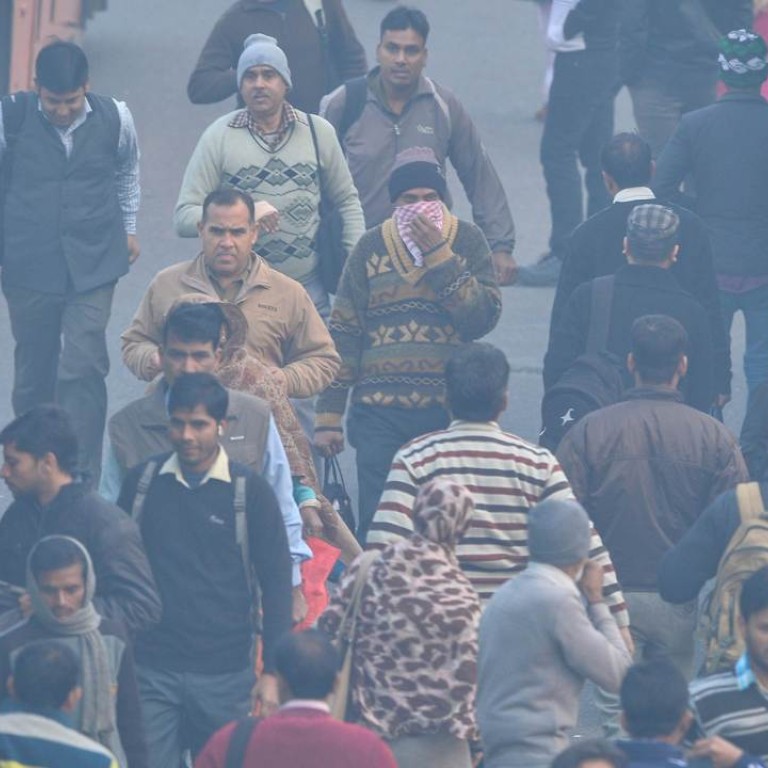
Can Delhi’s desperate measures to clean up its air really work?
Laya Maheshwari says the traffic restrictions, fuel requirement and curbs on car sales unveiled won’t be effective if enforcement is not thought through and is consequently lax
Every year, India stages a grand military parade on Republic Day, January 26. This year, the chief guest was US President Barack Obama, who spent three days in New Delhi and held numerous meetings – resulting in announcements of new joint projects, such as those to improve the air quality in Indian cities. It was about time: Obama’s visit to India’s capital could have shortened his lifespan by six hours, according to David Spiegelhalter, a statistician at the University of Cambridge.
READ MORE: Welcome to ‘Ground Zero’ of Delhi’s disastrous pollution problem, where the air quality is the most hazardous in the world
Fast forward to the present, and the situation seems to have become more shambolic. It is old hat that New Delhi is now the world’s most polluted city. The World Health Organisation accords India with the dubious distinction of being home to 13 of the top 20 polluted cities globally.
In the first week of December, around the time Beijing was suffering from the first of its recent terrible bouts of smog, PM2.5 levels (very fine particulate matter) in Delhi were around 1½ times worse. The Delhi High Court stated that being in the city was akin to “living in a gas chamber”.
Beijing has undoubtedly been successful in reducing congestion and air pollution by controlling car numbers, but whether Delhi can replicate that success is up in the air
The last move – even though it’s meant as a 15-day pilot project – has evoked the most scepticism and, in some cases, outrage. Beijing has undoubtedly been successful in reducing congestion and air pollution by controlling car numbers, but whether Delhi can replicate that success is up in the air.
First, Delhi’s experience may mirror Mexico instead of Beijing, where the introduction of similar moves led many people to buy a second, cheaper (and more polluting) car with a different licence plate. Second, the control period is to last from 8am-8pm, which leaves the door open for people to get round the curfews and thus increase congestion in the process, as in Bogota. Third, the monitoring mechanism for this rule has yet to be satisfactorily articulated.
READ MORE: Beijing under red alert for smog - and it’s going to get worse before it gets better

READ MORE: New Delhi’s pollution levels go from world’s worst to even worse
Delhi’s transport minister, Gopal Rai, claims civil defence officials and volunteers will be brought in to keep tabs on the roads. With the start date less than two weeks away, the lack of a concrete supervising process is worrying. Who are these “volunteers” and where will they come from? What is the penalty for flouting the measures, and is there any way to monitor cars and punish offenders without further slowing traffic? Earlier in 2015, an initiative to ban diesel cars over 10 years old descended into chaos with jams at checkpoints – the ban had to be withdrawn. Will these “volunteers” be sufficiently trained: what are they supposed to do when someone claims to have started driving at 7.30am but is stuck in traffic at 9am (not unthinkable in Delhi)?
Earlier in 2015, an initiative to ban diesel cars over 10 years old descended into chaos with jams at checkpoints – the ban had to be withdrawn
In the midst of this, the Supreme Court has announced moves that should achieve much more than the government’s measures. Until March 31, sales of new diesel cars with engines over two litres have been banned. Diesel trucks over 10 years old have been barred from entering Delhi and those not bound for the city can’t pass through. Taxis have been ordered to switch from diesel to compressed natural gas by the end of March.
Laya Maheshwari is an Indian journalist and essayist who writes about culture and politics. He tweets at @lazygarfield
